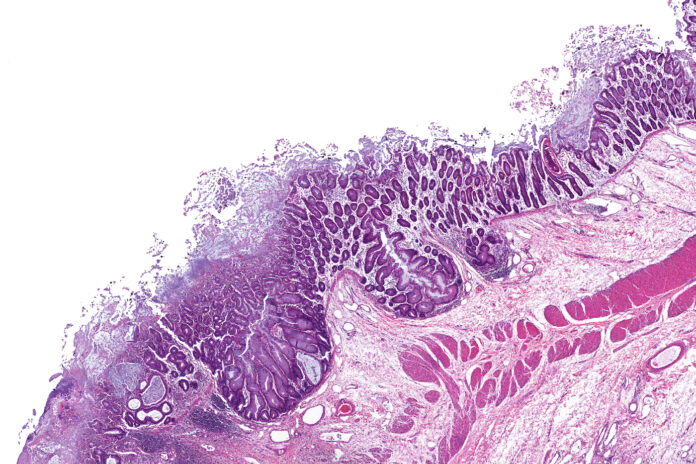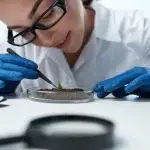All cultivation operations face the potential danger of biological contaminants such as mold, yeast, Aspergillus, E. coli, Salmonella, and other harmful pathogens. In most states where cannabis is legal, laws require products intended for distribution undergo microbial testing before entering the market. Shockingly, 10–15 percent of legal cannabis-flower tests fail to meet state colony-forming unit (CFU) limits. Failing microbial testing can have severe consequences for commercial growers, including lost revenue, expensive fines, liability litigation, reputation damage, and even the loss of their business license.
Consuming contaminated cannabis can lead to serious health problems. As the industry develops, additional regulations likely will evolve to incorporate more uniform standards with even more rigorous testing to guarantee the safety of both medical and recreational consumers. Customers also increasingly expect any legal products they purchase to meet a certain standard of safety and quality. Similar to our public assumption that food we purchase at grocery stores is safe to consume, we want to have confidence that legally grown and sold cannabis products also are safe.
The solution is cannabis remediation. Good manufacturing processes can solve most microbial challenges, but that alone can’t guarantee passing state regulations. Cultivators should take a proactive approach to remediating harmful microbial growth on everything they produce.
Putting biomass through a remediation or decontamination process can help ensure the end product will pass any existing and future microbial testing requirements and give cultivators complete confidence they are distributing only safe, clean products into the legal marketplace.
Many different decontamination methods are available to cultivators. Some of these technologies have crossed over from the food industry, but not all are ideal for the unique requirements of our industry. Each method has its own set of advantages and disadvantages, and it benefits cultivators, wholesale distributors, and other key stakeholders to be informed about their options before investing in new equipment or processes.
Below is an overview of each of the leading remediation methods.
Solvents
Roughly half of all harvested cannabis goes through an extraction process that uses solvents like ethanol to create the concentrates that are infused into non-flower retail products such as edibles. The process effectively doubles as a decontamination process, because the solvents kill all pathogens inadvertently. However, there is a growing trend in the industry to use solventless extraction processes, which likely don’t eliminate pathogens. For plant material not destined for extraction using a solvent, remediation probably is still necessary.
Autoclave
An autoclave system uses heat and pressure to kill microbes. This is an easy-to-use option, but it is time-consuming and does not allow inventory to be processed efficiently. Because autoclaves employ moisture, they increase the risk of mold infestation and can cause decarboxylation, thereby reducing the amount of THC available to the user and altering other physical properties of the plant.
Ozone gas
Ozone gas (O3) is a highly reactive oxidizing molecule that destroys microbes’ cellular walls, thereby inactivating or “killing” pathogens. Gas treatment is inexpensive but time-consuming. Additionally, O3 may not completely penetrate the bud and in some cases also may cause damage to terpenes.
Radio frequency
Radio frequency (RF) is an electromagnetic energy that occurs when exposure causes a rapid oscillation of ions and polar molecules such as water, generating heat and killing targeted contaminants. However, because RF remediation is dependent on moisture, microbes in dry areas of the bud are not remediated effectively. RF treatment also may cause burns and negatively impact the potency, color, smell, and taste of plant.
E-beam
E-beam radiation refers to machine-generated high-energy electrons. As electrons do not have mass, their penetration is limited by energy. This method is highly efficient, delivering the dose significantly faster than other irradiation techniques, but it is expensive, energy-intensive, and generally produces poor dose uniformity.
Gamma
Gamma radiation is utilized by companies that produce medicinal products in some countries with national medicinal programs, such as the Netherlands and Canada. It involves exposing cannabis to photons generated by the decay of a radioactive isotope that damages the DNA strands present in organic matter, reducing microbial growth in plants. However, the operation of these systems can be dangerous, and its use is highly controversial among consumers.
X-ray
X-ray is an effective form of medium- to high-energy radiation that provides excellent penetration for dense products such as cannabis without the use of a dangerous radioactive isotope. An ionizing-radiation X-ray system, or X-rays created through high-voltage electricity, can fully penetrate buds by destroying cellular DNA to deactivate microorganisms without changing the plant’s chemical profile or altering experiential properties such as flavor, color, and psychoactive effects. The systems require adequate floor space because of their size, as well as a way to get rid of heat captured by an external chiller system to keep the X-ray sources at a near-ambient temperature.
Because each method can differ significantly in effectiveness, cost, safety, quality, and other important factors, educating themselves on each method will help cultivators determine which method aligns best with their company’s values and goals.
Regardless of which method one chooses, implementing a decontamination protocol means a company is taking a proactive approach to ensuring their products pass existing and future microbial testing, reducing financial risks, and helping them confidently distribute safe, clean products to the market.
As the cannabis industry rapidly expands, prioritizing consumer safety will be increasingly essential in order for individual companies to thrive and for the legal market as a whole to succeed.













